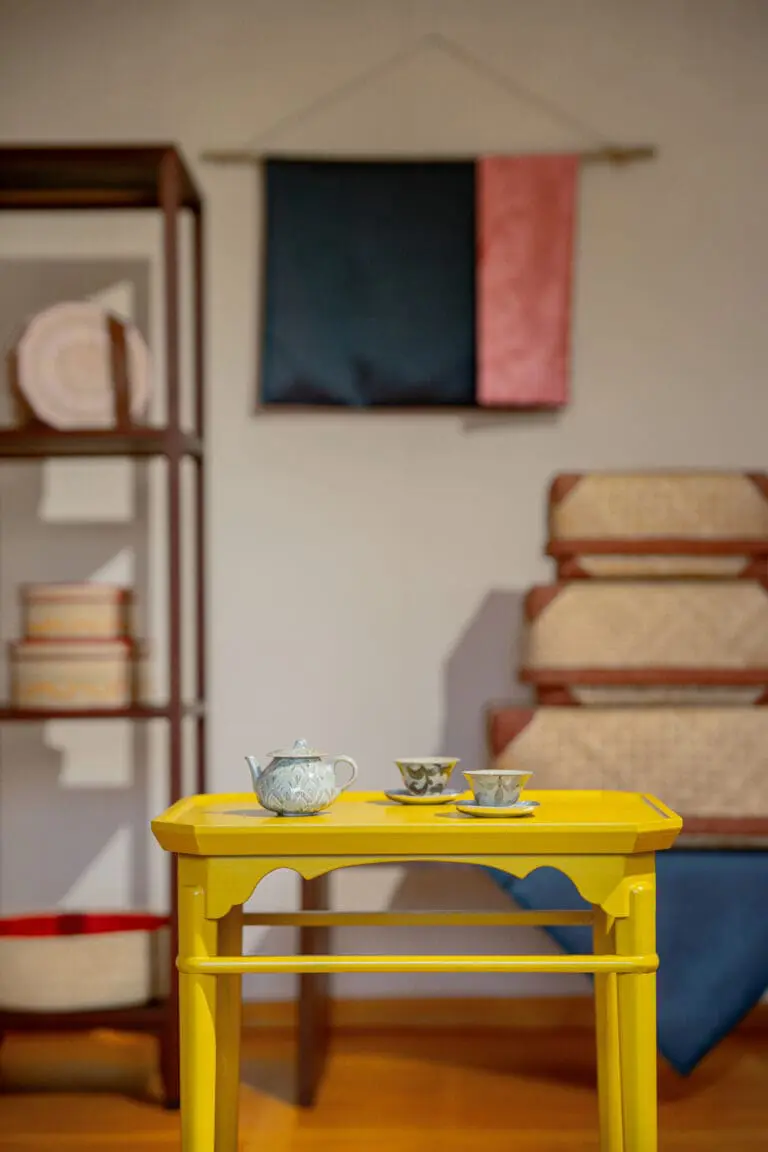김춘식[소반장] – 국가무형유산 / 김영민[소반장 이수자]
일본의 민예 연구가 야나기 무네요시는 1922년 펴낸 ‘조선과 그 예술’을 통해 나주반 업자의 명맥이 거의 끊어졌다고 언급했다. 1955년부터 삼종형인 김락연의 밑에서 목수 일을 배운 국가무형유산 김춘식 선생은 아드님인 김영민 이수자와 함께 나주반의 맥을 이어가고 있다. 나주반은 간결하면서 견고한 것이 특징이다. 천판의 네 귀를 귀접이하여 모를 잘라낸 형태로서, 가락지(다리를 연결하는 가로 부재)등의 간결미가 우선한다. 상판 가장자리인 변죽이 특징인데 아교를 칠하고 홈을 판 변죽을 둘러 끼우는 방식으로 이곳에는 대못을 쳐서 견고함을 더한다.
나주반, 은행나무, 옻칠
나주반, 은행나무, 옻칠
나주반, 느티나무, 옻칠
나주반, 느티나무, 옻칠
Kim Chun-sik [Sobanjang] – National Intangible Cultural Heritage Holder / Kim Young-min [Sobanjang Certified Trainee]
In his 1922 publication “Korea and Its Art,” Japanese folk art researcher Yanagi Muneyoshi noted that the tradition of making Naju-ban (Naju trays) was nearly extinct in Korea. Master Kim Chun-sik, a National Intangible Cultural Heritage holder, has been preserving this craft since 1955 when he began learning carpentry from his relative, Kim Rak-yeon. He now continues this legacy with his son, trainee Kim Young-min.
Naju-ban trays are renowned for their simplicity and sturdiness. The tabletops feature a distinctive design with folded and cut corners, highlighting the minimalism of the connecting under-beams (horizontal beams connecting the legs). The edge of the tabletop, called “byeonjuk,” is a unique feature where a groove is carved, glued, and then reinforced with large nails for added durability.
Naju-ban, Ginkgo Wood, Lacquer
Naju-ban, Ginkgo Wood, Lacquer
Naju-ban, Zelkova Wood, Lacquer
Naju-ban, Zelkova Wood, Lacquer

